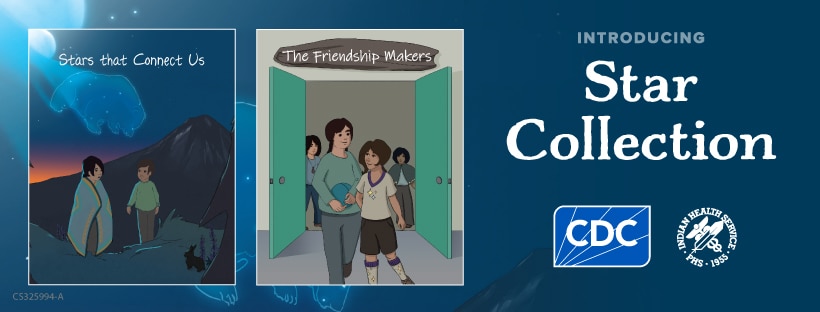Purpose
- CDC commits to creating injury prevention programs in tribal communities.
- CDC recognizes tribal sovereignty and the centrality of tribal cultures, languages, and practices to achieve and sustain optimal health, wellness, and safety in Indian Country.
Overview
Each tribal community is unique with its own set of traditions, languages, practices, connections to elders, and social ties. Tribal communities work with the support of CDC's National Center for Injury Prevention and Control (Injury Center) to prevent injuries, the leading cause of death for American Indians and Alaska Natives (AI/AN) between the ages of 1 and 54.
The Injury Center partners with and supports tribal communities, federally recognized tribes, Tribal Epidemiology Centers, tribal organizations, and Indian Health Service to improve health and wellness.
Explore topics
Star Collection

The Star Collection books features and celebrates feeling connected to culture and community and having positive relationships with others that are safe, stable, and nurturing.
